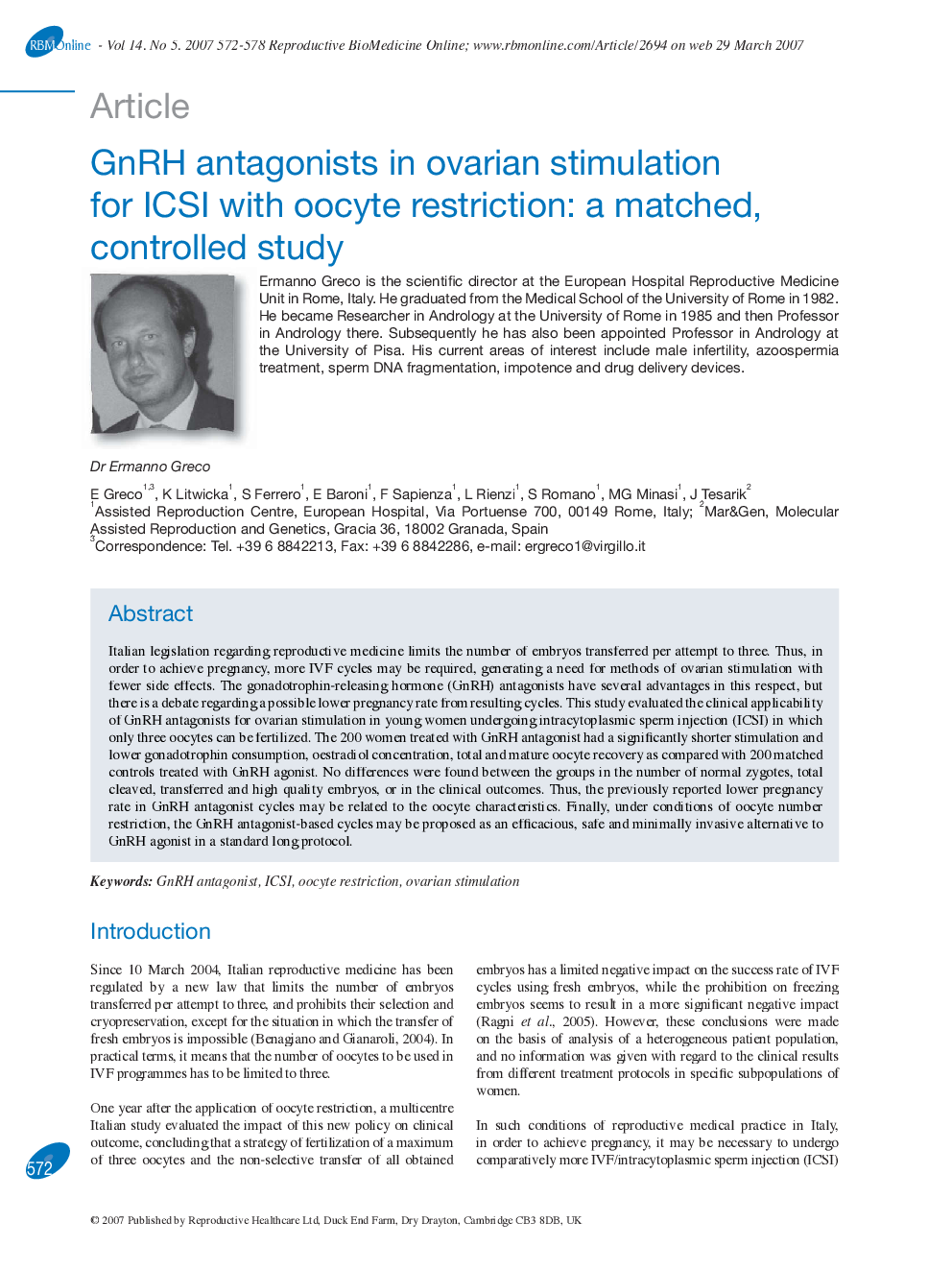| Article ID | Journal | Published Year | Pages | File Type |
|---|---|---|---|---|
| 3972974 | Reproductive BioMedicine Online | 2007 | 7 Pages |
Italian legislation regarding reproductive medicine limits the number of embryos transferred per attempt to three. Thus, in order to achieve pregnancy, more IVF cycles may be required, generating a need for methods of ovarian stimulation with fewer side effects. The gonadotrophin-releasing hormone (GnRH) antagonists have several advantages in this respect, but there is a debate regarding a possible lower pregnancy rate from resulting cycles. This study evaluated the clinical applicability of GnRH antagonists for ovarian stimulation in young women undergoing intracytoplasmic sperm injection (ICSI) in which only three oocytes can be fertilized. The 200 women treated with GnRH antagonist had a significantly shorter stimulation and lower gonadotrophin consumption, oestradiol concentration, total and mature oocyte recovery as compared with 200 matched controls treated with GnRH agonist. No differences were found between the groups in the number of normal zygotes, total cleaved, transferred and high quality embryos, or in the clinical outcomes. Thus, the previously reported lower pregnancy rate in GnRH antagonist cycles may be related to the oocyte characteristics. Finally, under conditions of oocyte number restriction, the GnRH antagonist-based cycles may be proposed as an efficacious, safe and minimally invasive alternative to GnRH agonist in a standard long protocol.
